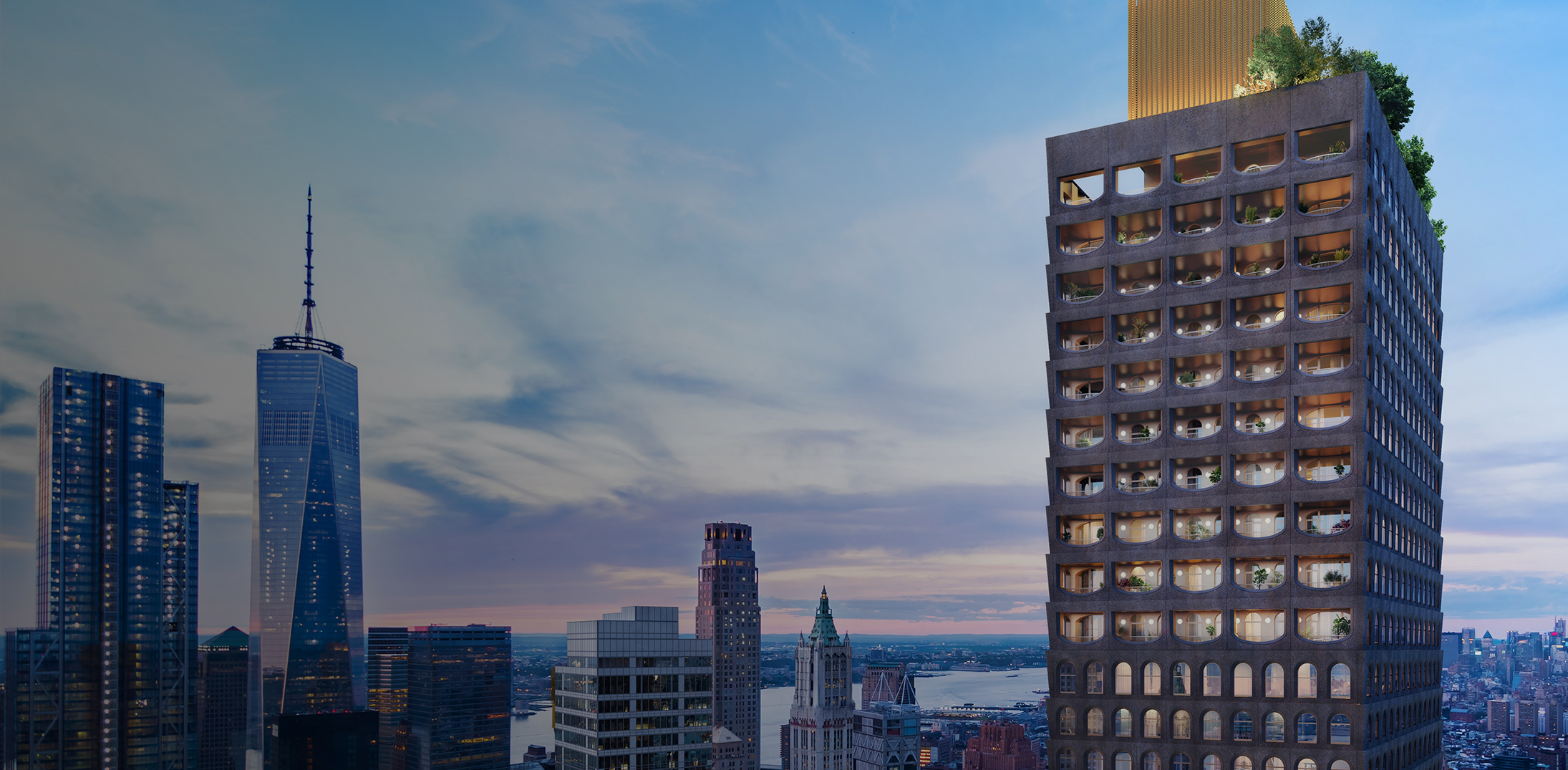We are thrilled to announce the winners of Architizer's inaugural Vision Awards, the world’s biggest awards program dedicated to the art of architectural representation. Sign up to receive future program updates >
Having to develop presentation renderings for a project still in design development can put an architect in an awkward position. Clients and public review boards are now used to looking at photorealistic renderings, even for projects that are still in very early design phases, but if basic materials, much less furniture and fixtures, haven’t been selected yet, how can an architect illustrate what the building will look like?
The answer, says Troy Hodgson of rendering firm Darcstudio, is to use “positive ambiguity” to convey the feeling of a space, whether it be a cozy reading room or peaceful public plaza. “It’s about creating an emotion and engaging people’s imagination,” Hodgson says, “it’s not about ‘does my door handle look right.’”

Rendering for Pingus Winery by Peter Zumthor; image courtesy Darcstudio
For renderings of projects whose designs are still developing, Darcstudio will develop a basic color palette that works off of whatever material ideas the architects have given them. These colors can be used to suggest certain finishes where the designers don’t have anything yet picked out. The palette is then loosely applied to a hand sketch that frames the shot and guides the composition.
Then the studio will set up the shot in the 3ds Max model of the project and confirm the perspective with the client. The next step is setting up the lighting, then rendering out the image via Corona with materials applied and finally editing the result in Photoshop. The whole process usually takes a week for one artist to complete one image.

Rendering steps for a project by Ayre Chamberlain Gaunt; image courtesy Darcstudio
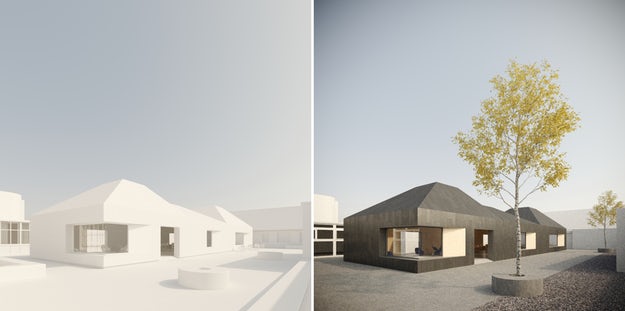
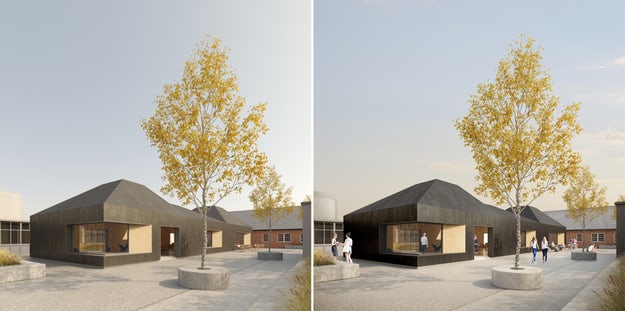

Final rendering for a project by Ayre Chamberlain Gaunt; image courtesy Darcstudio
It’s the combination of manual and digital techniques that Hodgson says gives the studio its ability to suggest material palettes before they are definite. “We’ve got more of an architectural approach to the images because it’s almost evolved from drawing,” he says. “If you go back through history, artwork was ambiguous. You get too close to a painting, and you can’t really see what is going on; you’ve got to step away from it.”
Hodgson cited his experience walking through the Tate in London as a young architect who couldn’t afford to do much else and discovering the work of J.M.W. Turner, the British land- and seascape painter. His late works heavily turned toward dramatic abstraction where “it’s not about painting what the sea looks like or the sky looks like. He started painting how it felt.”
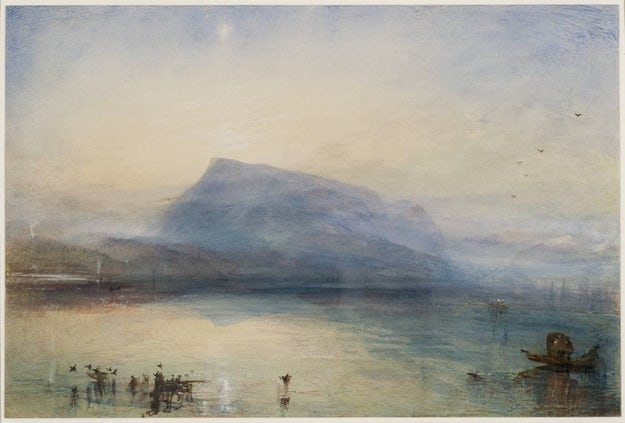
The Blue Rigi, Sunrise by J.M.W. Turner, 1842; image via Tate
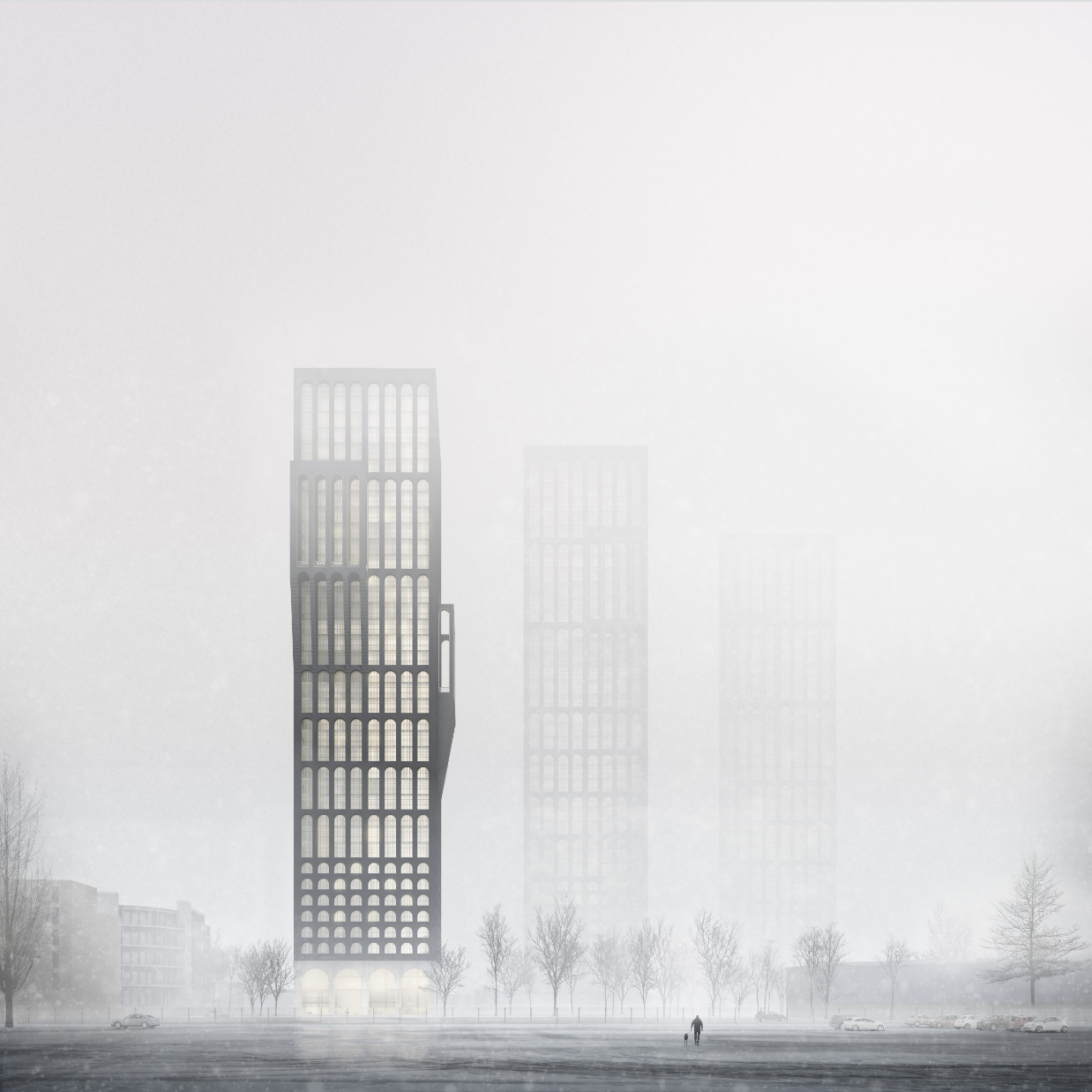
Rendering for Mancunian Tower by Tim Groom Architects; image courtesy Darcstudio
Darcstudio brings back this emotional abstraction into digital renderings, going so far as to design custom 3-D plants and grass that look “softer” and less harshly realistic than the commercially available ones. The effect draws the viewer in and allows them to finish the scene in their own imagination.
The future of rendering is not necessarily moving toward more and more exact realism. Architectural visualization is a medium for communication, and like any means of communication, it conveys not only information, but also emotion. Still, new technology, like virtual-reality headsets and augmented reality, seem to be pushing expectations in a new direction. “We put so much time and effort into crafting these images,” Hodgson says, “that you wonder whether there is going to be a need for what we do in five years.”
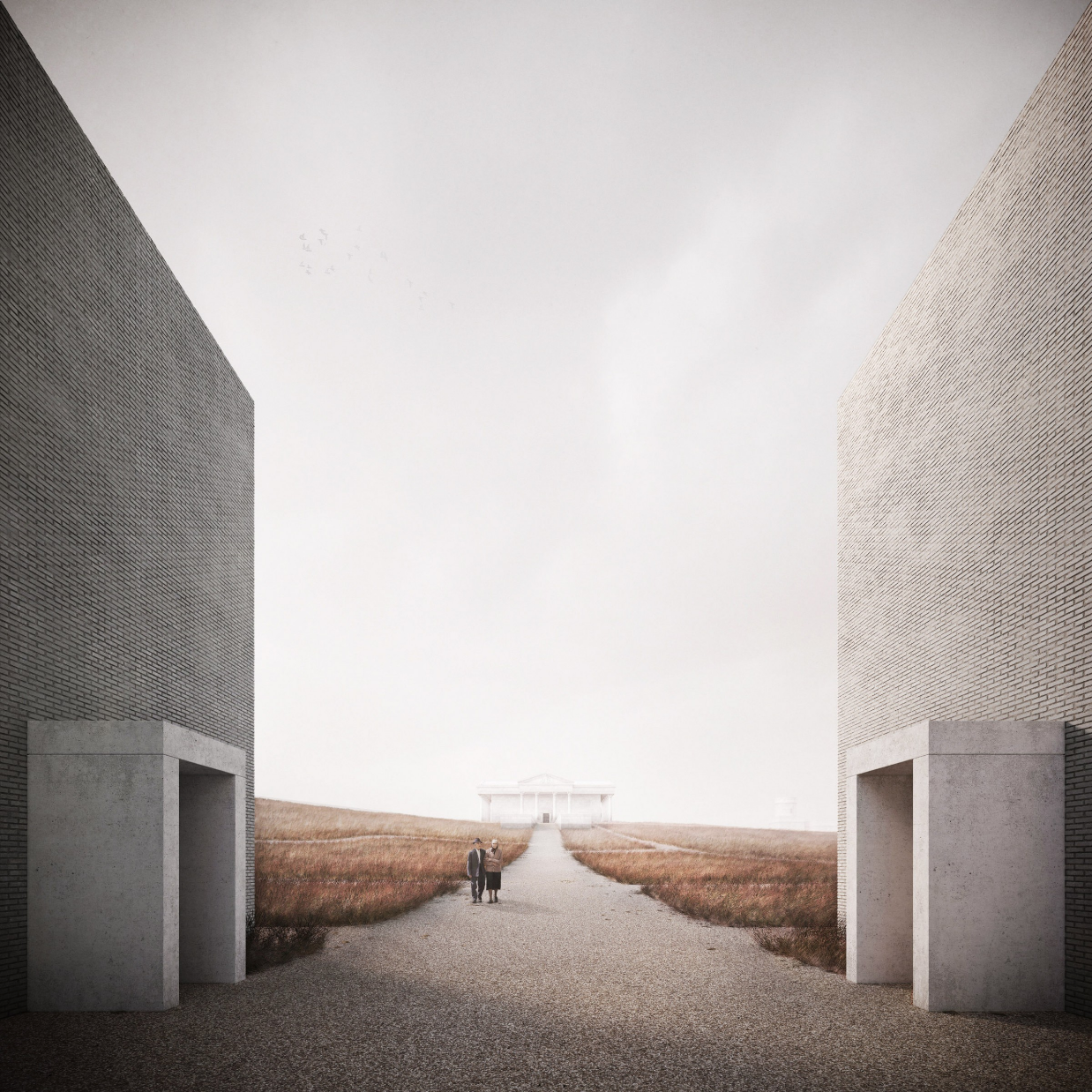
Rendering of Malmo Cemetery by Sigurd Lewerentz; image courtesy Darcstudio
The answer, he says, is not to blindly adopt new technology simply because it is there, but to experiment with how new media can supplement existing practices and how the magic and ambiguity of painterly effects can be brought to life in new machines. Hodgson showed off a 360-degree image that can be explored by looking ‘through’ an iPad.
The view changes as the tablet is moved around as though it were a window into the virtual space. The effect was much more pleasant than the often slightly nauseating experience of wearing a VR headset; it was more like reading out of a magic picture book. It’s already been very successful in public review processes, Hodgson says, with the enchantment of the experience winning over skeptical and often conservative crowds.
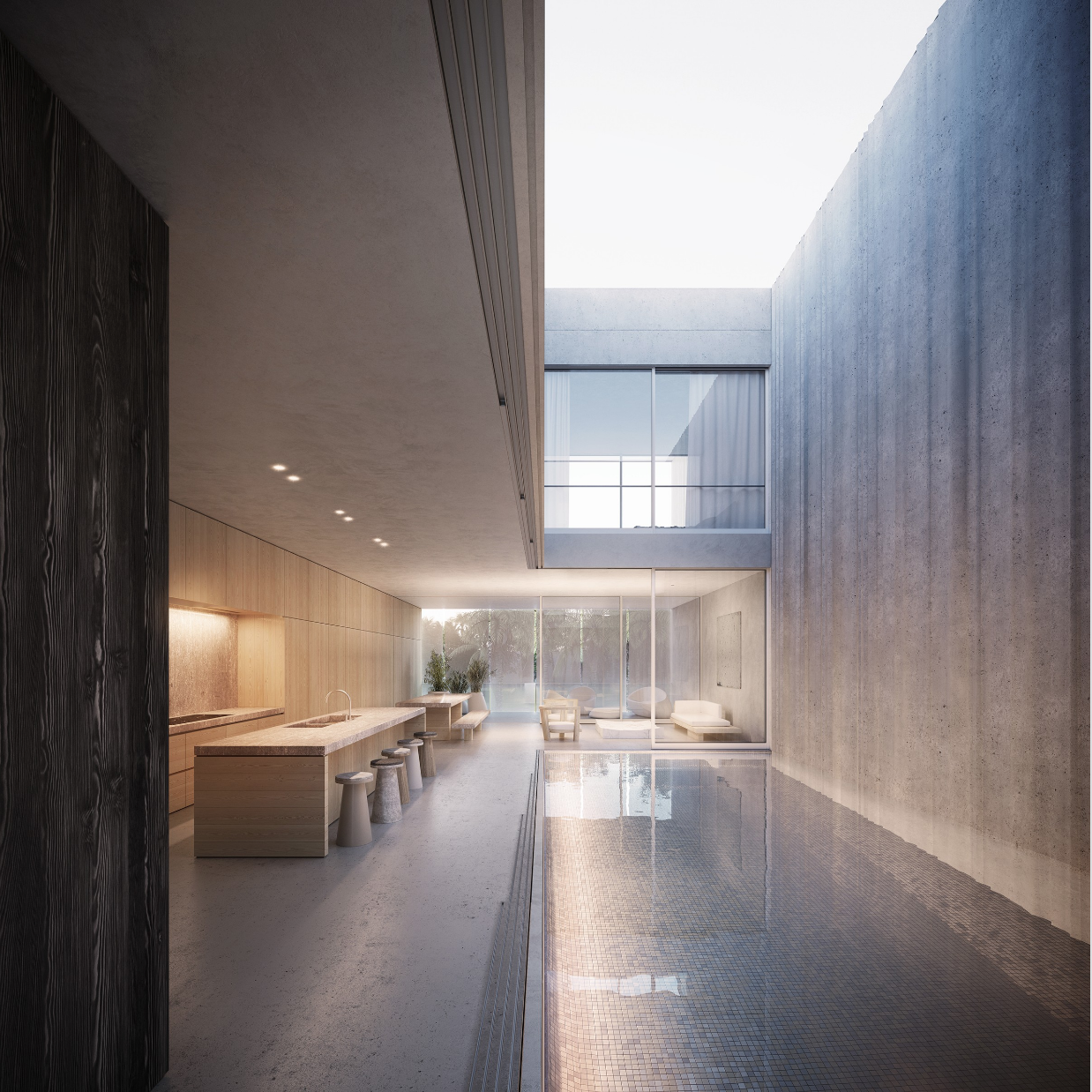
Rendering for Blurry Block by Of Possible; image courtesy Darcstudio
Renderings like Darcstudio’s offer a way for architects to experiment with material effects in high fidelity without fully committing to them. A visualization like the one above “sits between the sketch and the finished photography of the building.” Such images can also be powerful tools in the material selection process. They can provide a target toward which specifiers can aim their efforts.
Rather than struggling to find the words to describe the effect you want, you can simply share an image of the overall goal. It’s more powerful than simply listing benchmarks or references, and it can suggest effects that a designer may want but may not even be aware of yet. “It’s about creating an emotion,” Hodgson says, “and that’s what an image is about, isn’t it?”
We are thrilled to announce the winners of Architizer's inaugural Vision Awards, the world’s biggest awards program dedicated to the art of architectural representation. Sign up to receive future program updates >






